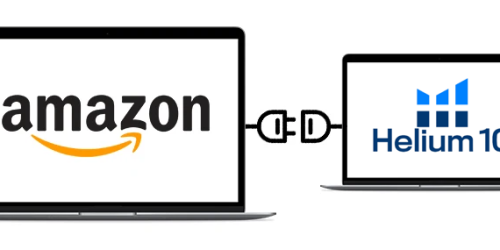How I Found My First Winning Product for Amazon FBA | 3 Step Product Research Strategy
Finding that first winning product for Amazon FBA can feel like searching for gold without a map. But through a simple, strategic approach, I was able to launch my first product, make back my investment, and even turn a profit—all within 30 days. Here, I’ll break down the exact three-step product research strategy I used, and how you can use it to find your first winning product. Let’s dive in!
Step 1: Product Discovery Stage
In this first stage, the goal is to gather a large list of potential product ideas to choose from. If you rely only on what you can think of off the top of your head, you’ll quickly run out of ideas. Instead, a product database tool can help you generate endless ideas by filtering through millions of products on Amazon.
Recommended Tool: Helium 10’s Black Box
Black Box allows you to filter through Amazon’s product catalog based on specific criteria to find the exact types of products you’re looking for. Here’s how to get started:
1. Sign Up for Helium 10: Download the free trial or apply a discount code if you decide to upgrade.
2. Install Chrome Extension: You’ll need this for later stages.
Setting Up Your Product Search Filters
To ensure you’re only looking at viable products, set up the following filters:
Filter Recommended Setting Reason Marketplace US (or your target market) Target the market you’re selling in. Categories Avoid clothing, electronics, food, and health items These can have high return rates, complex variations, or legal complications. Review Count Max: 300 Higher review count usually means more competition. Product Size Standard size only Avoids high storage and shipping costs. Weight 2 lbs or less Keeps shipping costs low. Exclude Keywords Terms like “men’s,” “shirt,” “Nike” Filters out products you don’t want to sell. Price $15-$50 Ensures room for profit after Amazon fees and shipping. Monthly Revenue $6,000-$18,000 Aim for products that can generate ~$2,000 in monthly profit. Monthly Sales Min: 300 Ensures there’s demand for the product.
Pro Tip: Think outside the box by using unique filter settings or experimenting with decimal numbers in price and revenue fields (e.g., $29.67 instead of $30).
Once you’ve set your filters, click “Search” and Black Box will generate a list of products that match your criteria. At this point, focus on products that seem unfamiliar or unique rather than those you recognize, as these are more likely to be under-explored.
Step 2: Product Analysis Stage
After finding a potential product, it’s time to analyze the niche to validate demand and competition. This stage involves analyzing the top listings in the niche to ensure it meets all necessary criteria.
1. Find the Main Keyword: Search for the main keyword of the product. For example, if your product is a “foam dressing,” confirm that keyword by checking similar products.
2. Analyze with Helium 10’s X-Ray: Open the Helium 10 Chrome extension and select X-Ray to view detailed product data, including monthly sales, reviews, revenue, and other key metrics.
Key Metrics to Analyze
Metric Target Explanation Review Count Majority under 300 Lower review counts indicate less competition. Monthly Sales 300+ units Ensures demand is high enough to meet revenue goals. Revenue $6,000+ per month Aim for at least $2,000 in estimated profit. Listing Age Majority >3 months Avoid niches with too many new listings, as they may be saturated. Brand Dominance Few/no major brands Competing against established brands can be challenging. Seasonality Steady sales year-round Avoid seasonal items unless you’re prepared for fluctuating demand.
Pro Tip: Avoid sorting the results by metrics like sales or revenue. Stick to the organic order, as this is the order you’ll compete against.
3. Check Profit Margins: Use Helium 10’s Profit Calculator to estimate costs. You can adjust the price, fees, and manufacturing costs to ensure your profit margin meets your goals. If the estimated net profit is under $5, it may be best to move on.
4. Evaluate Niche Saturation: Check for an excessive number of new listings (you want fewer than four to five in the top 15). Too many new listings indicate high competition and potentially high advertising costs.
5. Confirm Product Compliance: Ensure the product doesn’t have patent or trademark issues and complies with Amazon’s guidelines. You can use Google Patents to search for any existing patents on the product design.
6. Check for Compliance Requirements: Use Amazon’s Compliance Self-Assessment Tool to check for certifications or documentation you’ll need to sell your product, such as safety tests or quality certifications.
Step 3: Product Tracking Stage
Tracking your product idea over time is essential to ensure that demand, competition, and profitability remain viable from the time you discover the product to when you’re ready to place your first order.
Tracking Tips
1. Monitor the Niche: Regularly check the niche and main keywords to see if any new competitors have entered or if demand remains consistent.
2. Use Helium 10’s Product Tracker: In X-Ray, select Track Competitor for any top listings you want to follow. This lets you monitor sales, price changes, and inventory levels for your top competitors.
3. Watch for New Listings: Track new sellers to get an idea of how quickly they’re gaining traction. This can give you insight into whether the niche is becoming too competitive.
The Importance of Differentiating Your Product
Once you’ve validated a product idea, the final step is finding a way to differentiate your product. This is crucial because selling a generic version of a popular product often leads to a price war, which erodes profit margins. Here are some differentiation strategies to consider:
• Add Value: Improve the product’s quality, add features, or bundle it with a complementary item.
• Solve a Problem: Read reviews to identify common complaints and find ways to address them.
• Objective Differentiation: Focus on measurable features, like durability, better materials, or practical functions. Avoid purely aesthetic differences like color, which are subjective and may not appeal to a broad audience.
Differentiating your product will allow you to charge a premium price, giving you a competitive advantage without resorting to discount wars.
Recap: 3-Step Product Research Strategy
Here’s a quick summary of each stage:
Stage Key Actions Product Discovery Use Black Box to find products that match specific criteria. Product Analysis Analyze the niche for demand, competition, and profit. Product Tracking Monitor your product idea until you’re ready to place an order.
By following this strategy, you can discover a steady stream of product ideas, validate them effectively, and launch products with higher profit potential. This three-step approach is what I used to find my very first winning product, and I’m confident it can help you find yours.






